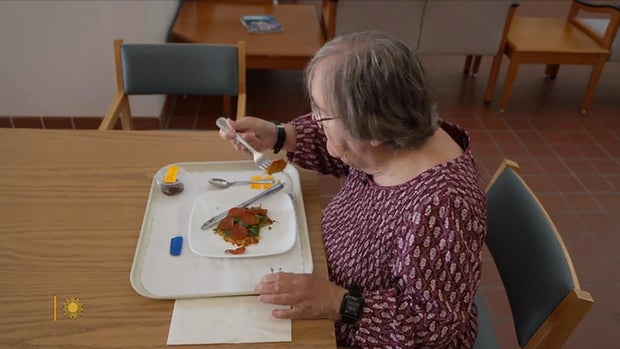CBS News
How much is full coverage pet insurance?

Getty Images
Pet ownership has been on the rise in recent decades, with 70% of American households having a pet, up from 56% in 1988, according to the American Pet Products Association.
But if you want to be a pet parent, you should be prepared for how expensive these companions can be. The average dog owner, for example, spends $4,512 per year on their pet, according to a USA Today Blueprint survey.
Veterinary care can be particularly pricey, especially if your pet has a significant accident or illness.
For example, “a torn ligament will require bloodwork, radiographs, surgery, pain medications, and even physical therapy. Major events like this can cost over $10,000 in total based on where you live,” says Dr. Ray Spragley, founder and veterinarian at Zen Dog Veterinary Care.
One way to reduce this financial risk is to get pet insurance.
“With pet insurance, you can avoid the shock of a major bill or the inability to provide treatment for your pet,” says Dr. Spragley. Don’t let unexpected vet bills come between you and your pet’s well-being. Start by getting a free price quote.
But not all pet insurance plans are the same. Some types of pet insurance provide narrow coverage for a lower price, such as accident-only pet insurance policies. Others, however, provide more of what could be considered full coverage pet insurance.
Find out what your best pet insurance options are online now.
What is full coverage pet insurance?
While full coverage is somewhat subjective, in general, it means that your pet insurance covers a broad spectrum of veterinary care.
“Full coverage would be a plan that covers accidents, illnesses, hereditary conditions, behavioral issues, and even some alternative therapies,” explains Dr. Spragley.
“There are also add-ons available such as preventative care coverage to cover vaccines, check-ups, and routine procedures,” he adds.
Considering pet insurance? Discover its numerous benefits and get a free quote today or compare the companies on the table below.
Ready to get started? Compare your top pet insurance policy options here.
How much is full coverage pet insurance?
Full coverage pet insurance varies based on factors like reimbursement percentages, deductibles and the specific coverages that an insurer includes.
For example, some plans might be considered full coverage because they cover accidents, illness, hereditary conditions and behavioral issues, but one might include certain veterinary exam fees, while another might offer this as an optional add-on.
In general, though, accident & illness pet insurance policies cost an average of $640.04 per year for dogs and $387.01 for cats, according to the North American Pet Health Insurance Association (NAPHIA).
In comparison, accident-only plans cost an average of $200.58 per year for dogs and $122.19 per year for cats.
But while you might save a few hundred dollars per year going for less comprehensive pet insurance, if your pet does get sick and needs treatments for things like cancer, gum disease, parasites, etc., then you could end up paying a lot more out of pocket for treatment.
Getting full coverage pet insurance proactively can be particularly important if you want to protect against the cost of hereditary conditions.
“Some breeds are predisposed to certain diseases throughout their lives. Your veterinarian can give you an idea of this, which allows you to have your pet covered by pet insurance — well before the issue they are predisposed to — is to arise,” explains Dr. Spragley. “Pet insurance companies will not cover preexisting conditions so you will not be reimbursed if they were diagnosed before the insurance policy was initiated.”
How to get inexpensive full coverage pet insurance
To save money while still getting good pet insurance coverage from a reputable pet insurance company, it’s better to start your search as soon as possible so you can qualify for lower premiums.
“The best way to save money on pet insurance is to get it when your pet is young, before they have any existing health conditions. It may not seem obvious, but spending a little now will save much more later,” says Dr. Doug Mader, an author and retired veterinarian.
“Another way to save some money on premiums is to purchase a policy that has a higher deductible,” he adds.
While that might mean you need a larger emergency fund to cover the deductible just in case, it can free up room in your monthly budget while still having comprehensive pet insurance protection.
Similarly, you can adjust levers such as the reimbursement percentage and coverage limits, notes Dr. Spragley. However, this could increase the amount you have to pay out of pocket if your pet gets sick or injured.
Lastly, it’s helpful to get quotes, as the specific prices can vary based on factors like your pet’s age and breed.
“The best way to find the best deal is to shop around and get comparative quotes, so that you can actually compare apples to apples,” says Dr. Mader.
And, whether you end up choosing a comprehensive pet insurance plan or decide on a narrower one like accident-only insurance, it’s important to realize that the upfront costs can pay off down the road.
“Pet insurance will never seem like a good deal until there is a very large surprise veterinary bill,” says Dr. Spragley.
Thinking about pet insurance? Get a free quote and unveil hidden benefits that could protect your furry friend.
CBS News
A study to devise nutritional guidance just for you

It’s been said the best meals come from the heart, not from a recipe book. But at this USDA kitchen, there’s no pinch of this, dash of that, no dollops or smidgens of anything. Here, nutritionists in white coats painstakingly measure every single ingredient, down to the tenth of a gram.
Sheryn Stover is expected to eat every crumb of her pizza; any tiny morsels she does miss go back to the kitchen, where they’re scrutinized like evidence of some dietary crime.
Stover (or participant #8180, as she’s known) is one of some 10,000 volunteers enrolled in a $170 million nutrition study run by the National Institutes of Health. “At 78, not many people get to do studies that are going to affect a great amount of people, and I thought this was a great opportunity to do that,” she said.
CBS News
It’s called the Nutrition for Precision Health Study. “When I tell people about the study, the reaction usually is, ‘Oh, that’s so cool, can I do it?'” said coordinator Holly Nicastro.
She explained just what “precise” precisely means: “Precision nutrition means tailoring nutrition or dietary guidance to the individual.”
The government has long offered guidelines to help us eat better. In the 1940s we had the “Basic 7.” In the ’50s, the “Basic 4.” We’ve had the “Food Wheel,” the “Food Pyramid,” and currently, “My Plate.”
CBS News
They’re all well-intentioned, except they’re all based on averages – what works best for most people, most of the time. But according to Nicastro, there is no one best way to eat. “We know from virtually every nutrition study ever conducted, we have inner individual variability,” she said. “That means we have some people that are going to respond, and some people that aren’t. There’s no one-size-fits-all.”
The study’s participants, like Stover, are all being drawn from another NIH study program called All Of Us, a massive undertaking to create a database of at least a million people who are volunteering everything from their electronic health records to their DNA. It was from that All of Us research that Stover discovered she has the gene that makes some foods taste bitter, which could explain why she ate more of one kind of food than another.
Professor Sai Das, who oversees the study at Tufts University, says the goal of precision nutrition is to drill down even deeper into those individual differences. “We’re moving away from just saying everybody go do this, to being able to say, ‘Okay, if you have X, Y and Z characteristics, then you’re more likely to respond to a diet, and somebody else that has A, B and C characteristics will be responding to the diet differently,'” Das said.
It’s a big commitment for Stover, who is one of 150 people being paid to live at a handful of test sites around the country for six weeks – two weeks at a time. It’s so precise she can’t even go for a walk without a dietary chaperone. “Well, you could stop and buy candy … God forbid, you can’t do that!” she laughed.
While she’s here, everything from her resting metabolic rate, her body fat percentage, her bone mineral content, even the microbes in her gut (digested by a machine that essentially is a smart toilet paper reading device) are being analyzed for how hers may differ from someone else’s.
Nicastro said, “We really think that what’s going on in your poop is going to tell us a lot of information about your health and how you respond to food.”
CBS News
Stover says she doesn’t mind, except for the odd sounds the machine makes. While she is a live-in participant, thousands of others are participating from their homes, where electronic wearables track all kinds of health data, including special glasses that record everything they eat, activated when someone starts chewing. Artificial intelligence can then be used to determine not only which foods the person is eating, but how many calories are consumed.
This study is expected to be wrapped up by 2027, and because of it, we may indeed know not only to eat more fruits and vegetables, but what combination of foods is really best for us. The question that even Holly Nicastro can’t answer is, will we listen? “You can lead a horse to water; you can’t make them drink,” she said. “We can tailor the interventions all day. But one hypothesis I have is that if the guidance is tailored to the individual, it’s going to make that individual more likely to follow it, because this is for me, this was designed for me.”
For more info:
Story produced by Mark Hudspeth. Editor: Ed Givnish.
“Sunday Morning” 2024 “Food Issue” recipe index
Delicious menu suggestions from top chefs, cookbook authors, food writers, restaurateurs, and the editors of Food & Wine magazine.
CBS News
A new generation of shopping cart, with GPS and AI

Watch CBS News
Be the first to know
Get browser notifications for breaking news, live events, and exclusive reporting.
CBS News
“All hands on deck” for Idaho’s annual potato harvest

Watch CBS News
Be the first to know
Get browser notifications for breaking news, live events, and exclusive reporting.






